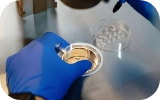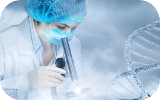Stage of Sperm Regeneration Cycle
The three stages of the sperm regeneration cycle are:Formation of the Sperm
Initially, the sperm is formed in tubes which are microscopic and present within the testicle. These tubes are called seminiferous tubes. The testicle produces two elements: namely testosterone and sperm. The impulse which enables these two productions directly originates from the brain, specifically from the pituitary gland which then releases:
- Luteinizing hormone (LH) which triggers testosterone development. The testosterone is released immediately into the blood circulation and is readily usable.
- Follicle-stimulating hormone (FSH) which triggers sperm development
The testicle is composed of three types of cells:
- Germ cells which produce the sperm
- Sertoli cells which foster the development and growth of the immature sperm
- Leydig cells which produce the testosterone
Maturation of the Sperm
Maturation is a long process and takes an average of 72 days. This stage is critical and defines therapy for men who have fertility problems. Keeping in mind that the male body produces millions of new sperm every single day, it is recommended for men who want to make lifestyle changes and thereby improve their sperm quality and success at reproduction.During the maturation, sperm continues to travel through the pathways of the seminiferous tubules and then reach the epididymis. The epididymis is worm-like, slender appendage which is positioned outside the testicle. This gland then turns into the vas deferens and the sperm is then carried to the scrotum and then to the groin. From the groin is it carried out to the pelvis and finally reaches the prostate gland. The prostate gland along with the seminal vesicles produces semen, a fluid which is released during an orgasm or when the man ejaculates.
 Infertility Counselling
Infertility Counselling Female Infertility Treatment
Female Infertility Treatment Andrology Treatment
Andrology Treatment Fertility Enhancing Surgeries - Female
Fertility Enhancing Surgeries - Female Fertility Enhancing Surgeries - Male
Fertility Enhancing Surgeries - Male Endoscopy Treatment
Endoscopy Treatment IUI Treatment
IUI Treatment IVF Treatment
IVF Treatment ICSI Treatment
ICSI Treatment Advanced IVF Solutions
Advanced IVF Solutions Embryology
Embryology Vitrification Egg, Embryo, Sperm Freezing
Vitrification Egg, Embryo, Sperm Freezing Preimplantation Genetic Testing (PGT)
Preimplantation Genetic Testing (PGT) Donation Program Embryo / Egg / Sperm
Donation Program Embryo / Egg / Sperm Self-cycleTM IVF
Self-cycleTM IVF

 Self-cycleTM IVF
Self-cycleTM IVF











